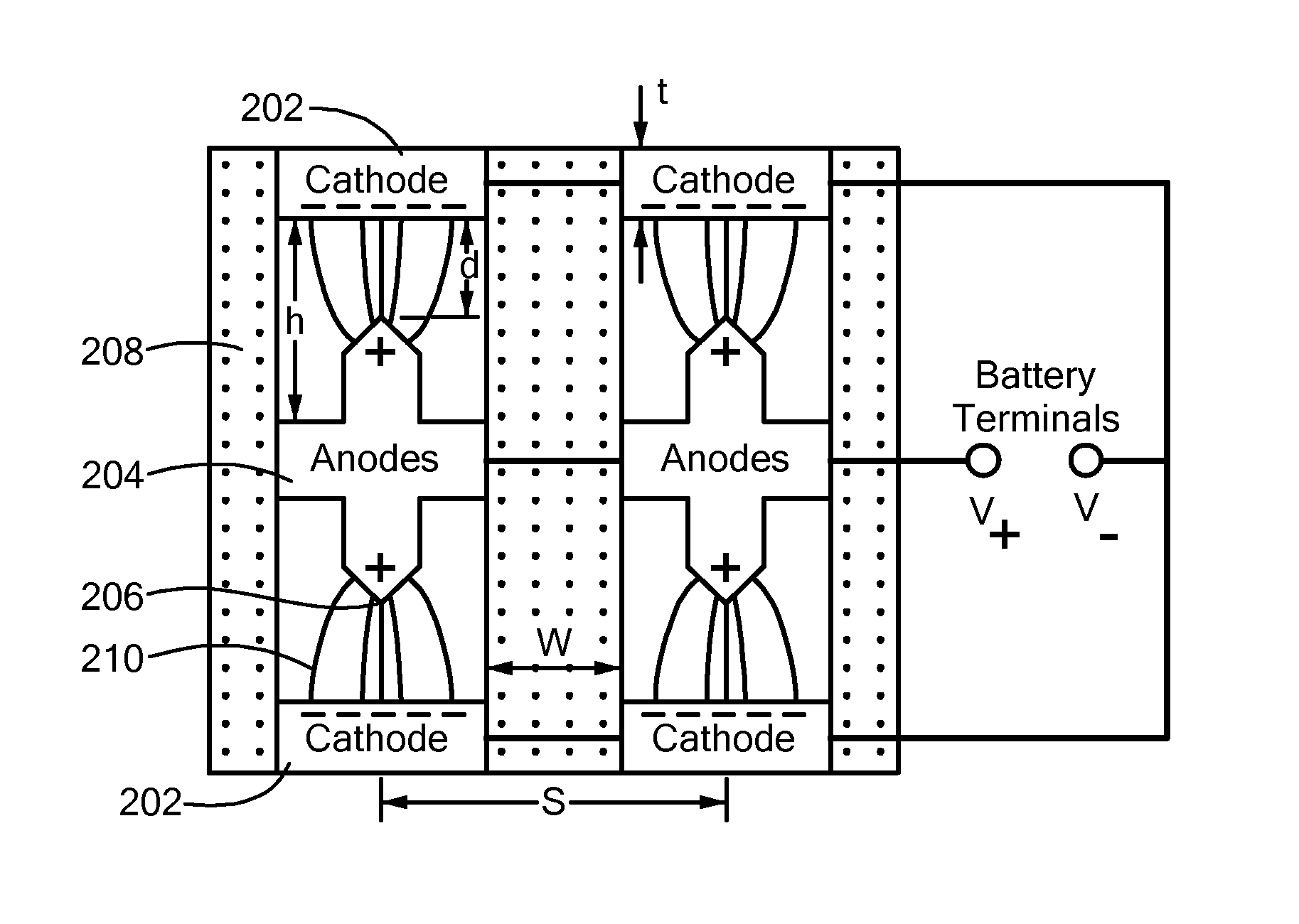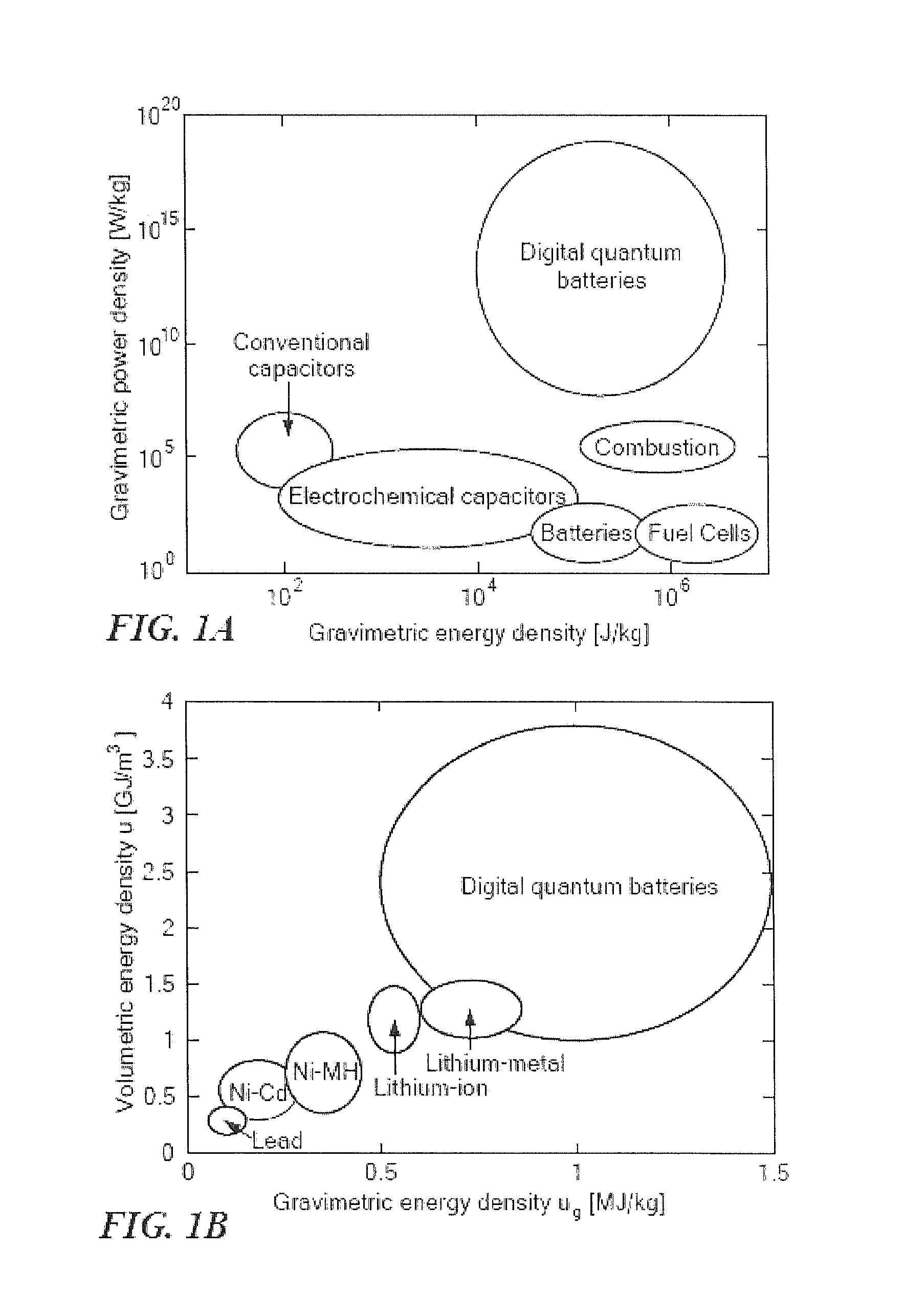Nano-capacitor arrays for energy storage using native aluminum oxide layers and other ultra-thin dielectrics
a technology of aluminum oxide and dielectric arrays, which is applied in the direction of fixed capacitor dielectrics, fixed capacitor details, multi-fixed capacitors, etc., can solve the problems of increasing the gap size between electrodes separated by solid dielectrics, and unable to address the enhancement of dielectric strength with decreasing the gap size between electrodes, so as to reduce localized heating energy and enhance energy storage
- Summary
- Abstract
- Description
- Claims
- Application Information
AI Technical Summary
Benefits of technology
Problems solved by technology
Method used
Image
Examples
Embodiment Construction
[0006]The present invention relates to nano capacitors with solid or partial-vacuum dielectrics.
[0007]As used herein and in any appended further description or claims, the term “nano-capacitor” is used interchangeably with the term “nanocapacitor.” The meaning of the term is that of a capacitor characterized by at least one dimension in the range between 0.1 nanometers and 1000 nanometers.
[0008]As used herein and in any appended claims, the term “electron mean free path” (MFP), used interchangeably with “electron inelastic mean free path” (IMFP), as applied to electrons traveling in a specified dielectric of any phase of matter, shall refer to the distance an electron may travel in the dielectric before the probability of its losing energy to scatter reaches 1 / e, where e is Euler's constant. The probability of scatter is 1−e−d / λ(E), where λ(E) is the MFP of an electron at incident energy E. The electron loses energy due to such processes as electron-hole formation in the dielectric ...
PUM
| Property | Measurement | Unit |
|---|---|---|
| Thickness | aaaaa | aaaaa |
| Thickness | aaaaa | aaaaa |
| Dielectric strength | aaaaa | aaaaa |
Abstract
Description
Claims
Application Information
 Login to View More
Login to View More - R&D
- Intellectual Property
- Life Sciences
- Materials
- Tech Scout
- Unparalleled Data Quality
- Higher Quality Content
- 60% Fewer Hallucinations
Browse by: Latest US Patents, China's latest patents, Technical Efficacy Thesaurus, Application Domain, Technology Topic, Popular Technical Reports.
© 2025 PatSnap. All rights reserved.Legal|Privacy policy|Modern Slavery Act Transparency Statement|Sitemap|About US| Contact US: help@patsnap.com



